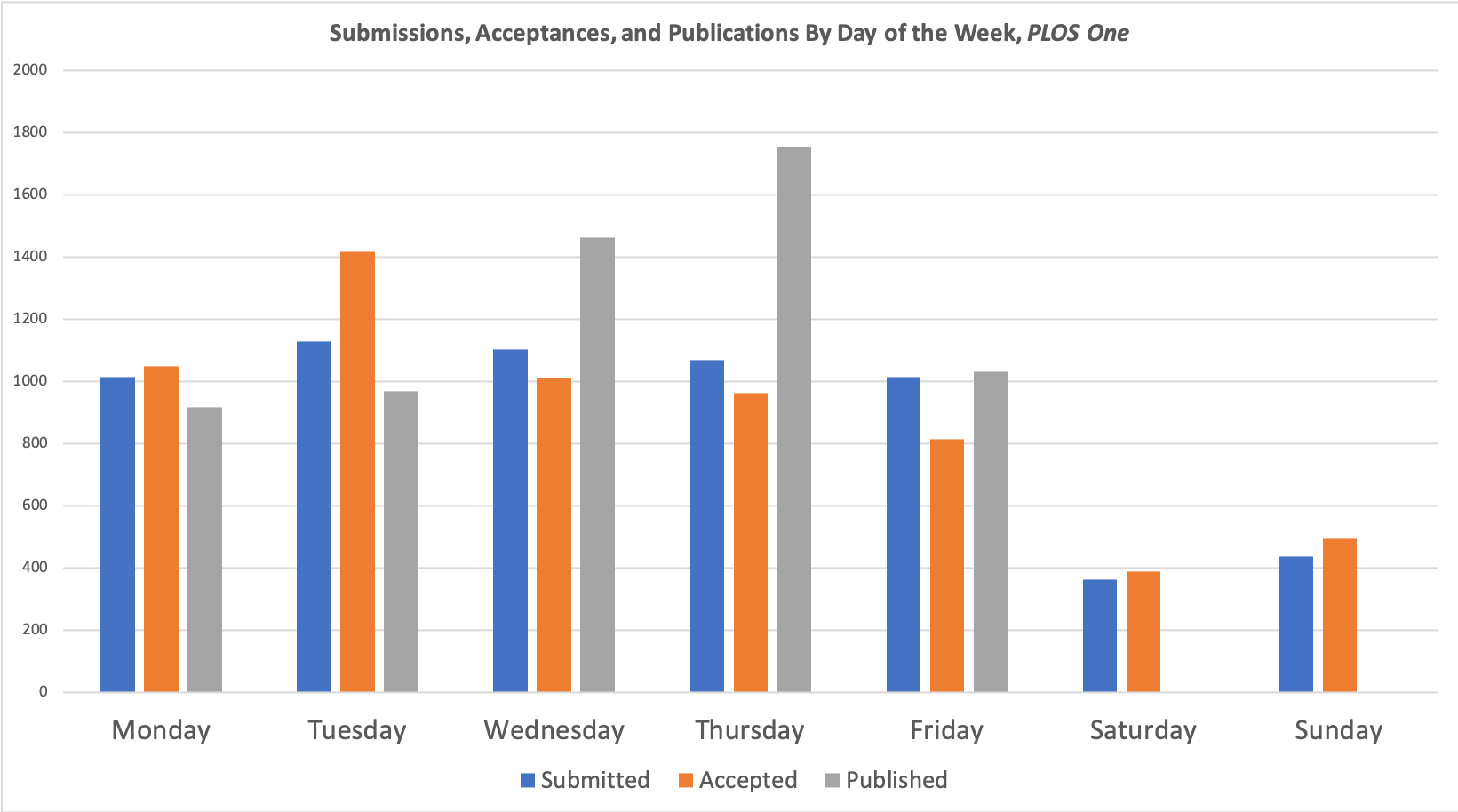PLOS One’s Weekend Warriors
Authors and reviewers are active on the weekend, while production takes a break

Looking across a few thousand papers published in three megajournals since 2018 — those journals being PLOS One, Nature Communications, and Scientific Reports — one little difference jumped out as the data were being collected and analyzed.
Judging from publication metadata, PLOS One reviewers work on the weekends, while the reviewers for the Nature megajournals don’t nearly as often.
No journal of the three publishes on the weekend, of course.
When my colleague and I caught this in the data, it made me think there must be a difference in journal cultures or systems — why (and how) would the reviewers for PLOS One be accepting so many more articles on weekends compared to what I could see in two other megajournals?
First, the data. As the chart below shows, from February 2019 to early July 2019, PLOS One authors and reviewers were busy every day of the week, while publication events increased Monday-Thursday before tapering off before the quiescent weekend:

Both Nature Communications and Scientific Reports also take the weekends off from publishing — as most journals do — but they are far less active overall on weekends when measuring acceptances. For Scientific Reports, 1.56% of papers published were accepted with a weekend date, while for Nature Communications, 2.96% were. These data compare to 14.35% for PLOS One.
As I noted in a post last week, PLOS One was the fastest to acceptance of the three megajournals analyzed, at 166 days, with Scientific Reports next at 186 and Nature Communications at 214 days. By having 14.4% of their acceptances occur over the weekend, PLOS One gains a 6% speed advantage (weighting time by volume) in time to acceptance. With differences of 12% and 29% in time to acceptance respectively, allowing acceptances over the weekend could diminish an advantage PLOS One has in time to acceptance.
Why are there differences in acceptance day patterns? It turns out to be a combination of culture and process. At PLOS One, when an Associate Editor recommends a paper for acceptance in the system, that date is recorded as the date of acceptance. Moving the paper to production takes a little longer, but the metadata are set at this point. At Nature, staff editors accept papers and issue an acceptance email to the authors, a process which pushes acceptances into the work week in nearly all cases (the International Date Line may be contributing to the 1-3% of weekend acceptances at Nature, if I were to venture a guess).
All three journals’ systems record date of submission metadata over the weekend, so clearly authors are busy submitting papers on Saturday and Sunday. Authors are also weekend warriors.
It seems PLOS One is capturing normal peer reviewer and volunteer editor behavior — that is, people squeezing extra hours from their weekends for their voluntary efforts. It’s another sign that reviewers and volunteer editors generally like what they do and work to support the culture of collaboration and altruism at the heart of peer review.
This also underscores that “speed” can be due to a number of factors, including process, policies, and how data are recorded as a result of the process.
PLOS One has detectable weekend warriors among its review system — while those at other journals may not be as obvious, they certainly exist, as well. Thanks to PLOS One’s way of capturing metadata and processing acceptances, we can see what’s actually going on to some degree with their AEs and reviewers.
A tip of the hat to all the weekend warriors of peer review — whether your efforts are reflected in the metadata or not.